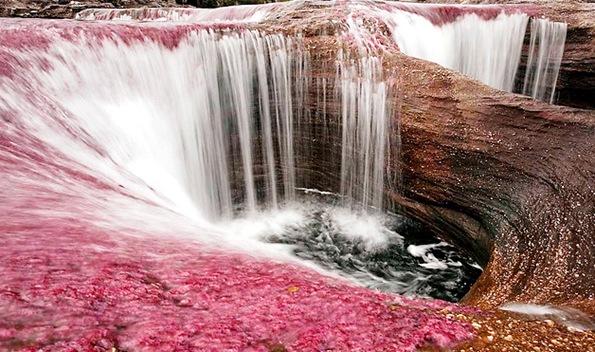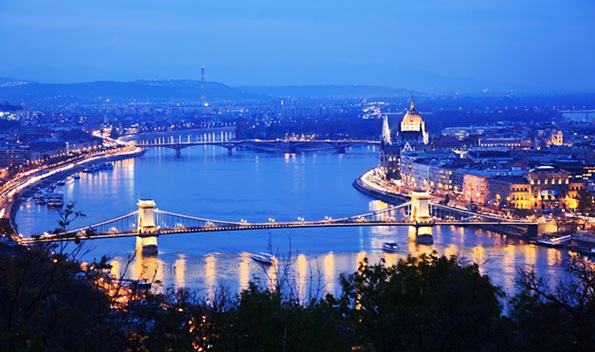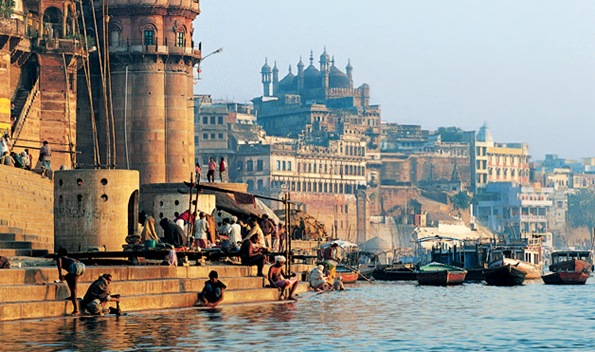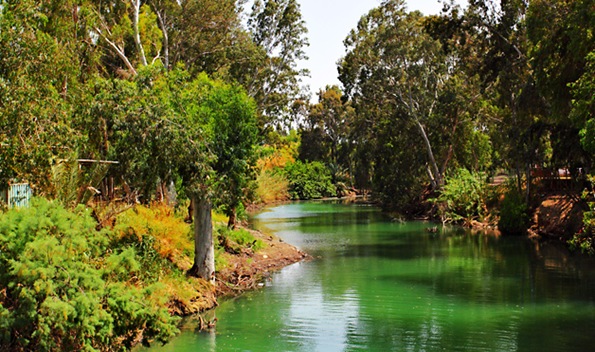Amazon, South America
Caño Cristales, South America
 Photo: Fredy Gómez
Photo: Fredy Gómez
Danube River, Europe
 Photo: Gil Azouri/Getty Images
Photo: Gil Azouri/Getty Images
Ganges, South Asia
 Photo: Robert Harding/Getty Images
Photo: Robert Harding/Getty Images
Jordan, Southwest Asia
 Photo: Shutterstock.com
Photo: Shutterstock.com
Mississippi, North America
 Photo: Kevin Horan/Getty Images
Photo: Kevin Horan/Getty Images
Nile, Africa
 Photo: Peter Adams/Getty Images
Photo: Peter Adams/Getty Images
Via: Woman’sDay
Beginning in Brazil and traveling through Peru, Ecuador, Bolivia and Venezuela before emptying into the Atlantic Ocean, the Amazon is perhaps the most record-breaking river in the world. It is the largest (2.7 million sq. miles), the widest (202 miles wide at its mouth; 6.8 miles wide along its path) and among the longest (4,000 miles) and deepest (300 feet in some spots). It is also called the "Ocean River" because it boasts the greatest total discharge of all rivers—between 9 million and 32 million gallons per second—which is 20 percent of the world's freshwater ocean discharge.
Caño Cristales, South America
 Photo: Fredy Gómez
Photo: Fredy GómezStarting in the Andean foothills of the Amazon rainforest in Colombia, the "river that ran away from paradise" is generally regarded as the most beautiful in the world due to its brief seasonal blooming of colorful bottom-feeding algae. In full glory during late October and early November when the water level is just right, vibrant blotches of reds, oranges, yellows, greens and blues paint its water—turning the surface into a virtual rainbow.
Danube River, Europe
 Photo: Gil Azouri/Getty Images
Photo: Gil Azouri/Getty ImagesAt 1,770 miles long, the Danube is the second longest river in Europe after the Volga. But unlike the Volga, which only runs through Russia, the Danube snakes through Germany, Austria, Hungary, Croatia, Serbia, Bulgaria, Moldova, Romania and the Ukraine before emptying into the Black Sea. Vital to the settlement and political evolution of central and southeastern Europe, the Danube's banks are lined with castles and fortresses as it was the boundary between so many great empires. Today the lower portion of the Danube is a major avenue for freight transport, while the upper Danube is an important source of hydroelectricity.
Ganges, South Asia
 Photo: Robert Harding/Getty Images
Photo: Robert Harding/Getty ImagesHindus believe the Ganges River is the earthly manifestation of the Goddess Ganga, and they worship it as the holiest of all rivers. Beginning in the southern Himalayas, the 1,560-mile river flows through China, India, Nepal and Bangladesh before emptying into the Indian Ocean. Many of the practicing Hindus who populate the 52 cities and 48 towns along its banks believe in the river's ability to cleanse them of their sins and liberate them from the cycle of life and death. Pilgrimage sites are particularly significant, attracting hundreds of thousands of worshippers each year, and some people cast the ashes of their dead into the river, believing it will guide the souls of the deceased straight to paradise.
Jordan, Southwest Asia
 Photo: Shutterstock.com
Photo: Shutterstock.comThe Jordan River is both the Biblical and historical epicenter of the Judeo-Christian world. Not only is it where Jesus Christ was baptized by John, but it is also believed to be the scene of a number of miracles, including the crossing from Egypt to Canaan, and Biblical wars, such as the battle between Jonathan and Bacchides. Though part of the river's upper portion is still used for baptisms today, much of it is considered endangered due to domestic and agricultural use.
Mississippi, North America
 Photo: Kevin Horan/Getty Images
Photo: Kevin Horan/Getty ImagesThe Mississippi River is the largest river system in North America—so large, in fact, that it runs through 10 U.S. states and is divided into two main parts: the Upper Mississippi (from its source in Northern Minnesota to where it meets the Ohio River at the southern tip of Illinois) and the Lower Mississippi (from the Ohio River to the Gulf of Mexico). A major navigational route and settlement hub since the Native Americans settled there, the Mississippi River has been immortalized in American culture in everything from books like Mark Twain's The Adventures of Huckleberry Finn to the rhythm and blues music of the Mississippi Delta.
Nile, Africa
 Photo: Peter Adams/Getty Images
Photo: Peter Adams/Getty ImagesAt 4,132 miles long, the Nile is the longest river in the world. It also happens to be one of the most iconic. Flowing north through the deserts of Uganda and Egypt, it has been the lifeline of Egypt since the Stone Age, and, to this day, the vast majority of the Egyptian population is settled along its path. It is also one of the main routes of shipping traffic. In fact, the winter winds are so strong that ships can travel against the current using just a sail.
Via: Woman’sDay


